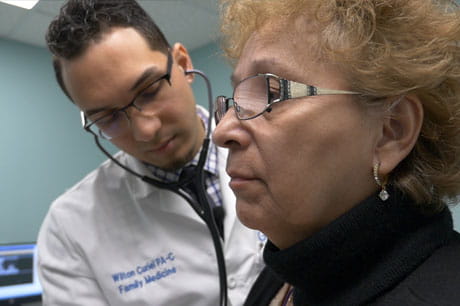Breaking the language barrier with certified medical interpreters
As Geisinger’s operations manager for community medicine in Luzerne County, Kathryn (Kathy) Hall recognizes the needs of her patient population. “There are many languages spoken here, but the primary one is Spanish,” she says of Geisinger’s Kistler clinic in Wilkes-Barre.
Spanish is the number one, non-English language spoken throughout Geisinger’s Pennsylvania enterprise, followed by Nepali, Mandarin, Russian and Vietnamese, according to Rebecca (Becky) Ruckno, director of health literacy and interpreting services at Geisinger.
“For our patients who don’t speak English, we use devices and services (video or audio) that provide a live interpreter to communicate between patient and provider, but we knew we needed another tool,” Becky says. “In areas where there is a large population of non-English-speaking patients, that tool is to have people in dual roles on site as interpreters.”
“It is more of a personal touch for our patients,” Kathy says of the certified medical interpreter program she and Becky began fostering at the Kistler clinic a few years ago.
It began with one bilingual employee, certified medical assistant Luis Avila, and has grown to include employees at every touch point who can speak directly with patients in their preferred language and are also empowered as certified medical interpreters to interpret for providers who don’t speak Spanish.
“I am able to build trust with patients,” Luis says. “And I feel they are more open about their needs because of that.”
“We know that when patients speak with providers in the language they prefer, compliance goes up, patient satisfaction goes up,” Becky says. She and Kathy expanded the certified medical interpreter program to Geisinger’s Hazleton clinic last year with equal success. It is now available throughout the system for bilingual employees who work in a location of need for their specific language.

